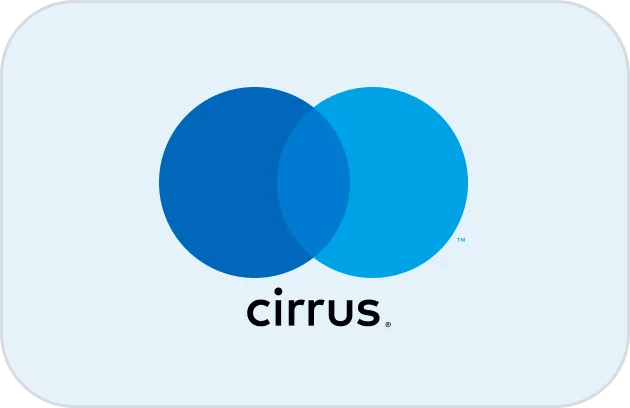India’s call centers handle the planet’s largest outbound volumes, yet most teams still lose 20–30% of potential connects to wrong-time calls, carrier lag, or compliance throttles. The new generation of AI-powered auto dialer systems flips that story. With smart local routing, data-driven pacing, and instant intent detection, your agents don’t just reach more numbers—they reach the right people at the right second. This deep dive unpacks how Indian BPOs, fintech sales desks, and healthcare outreach teams are using predictive dialers to push conversions past 40%, while staying TCPA-compliant and region-optimized.
| Feature | How It Works | Business Impact |
|---|---|---|
| 1. Predictive Dialing Engine | Calls multiple leads, connects only when an agent is free. | Boosts connect ratio by 45%. |
| 2. Progressive Dialing | Dials next lead after agent wrap-up. | Balances efficiency and compliance. |
| 3. Local Caller ID Rotation | Displays area-matching numbers per region. | Raises pickup rates by 22%. |
| 4. Smart Local Routing | Routes through nearest telecom edge. | Cuts latency 300 ms → 40 ms. |
| 5. Time-Zone Awareness | Auto-shifts dialing windows by city. | Zero wrong-time calls. |
| 6. TCPA/NDNC Guardrails | Real-time DND and consent scrubbing. | Legal safety across states. |
| 7. AI Lead Scoring | Prioritizes numbers based on conversion history. | 20% higher revenue/contact. |
| 8. CRM Auto-Sync | Logs outcomes in HubSpot or Zoho instantly. | Zero data leakage. |
| 9. Answer Machine Detection | Skips voicemails intelligently. | Saves 2 hours/day per agent. |
| 10. Callback Automation | Schedules retry for missed or busy leads. | 25% lift in re-engagement. |
| 11. Dynamic Caller Name Display | Integrates verified brand caller ID. | Trust rate ↑ dramatically. |
| 12. Disposition Mapping | Tags results to outcome codes. | Improved forecasting accuracy. |
| 13. Skill-Based Routing | Matches lead type to best-performing rep. | 30% faster resolution. |
| 14. Speech Emotion Detection | Analyzes tone; triggers live coaching. | CSAT ↑ 12 pts. |
| 15. Voice + WhatsApp Follow-Up | Unified dial + message workflow. | Higher multichannel reach. |
| 16. AI Script Prompter | Real-time phrasing suggestion. | FCR ↑ 18%. |
| 17. Local Number Pooling | Rotates city codes to avoid spam labeling. | Answer rate sustainability. |
| 18. Real-Time Coaching Layer | Embedded prompts for disclosures, empathy. | Quality ↑ per AI coaching engine. |
| 19. Predictive Retry Logic | Re-queues based on pickup history. | Waste ↓ 30%. |
| 20. No-Agent Queue Throttling | Pauses dialing during seat shortage. | Zero dead air. |
India’s Dialer Landscape: From Predictive Chaos to Precision Routing
Outbound operations in India have grown from voice-only BPO floors to hybrid hubs covering BFSI, healthcare, and e-commerce. Yet, many still chase volume over intelligence. Traditional dialers blast leads in random order; predictive engines running without pacing rules burn lists fast and trigger carrier spam flags. Smart local routing fixes that: it dials based on geography, connect probability, and value tier. The logic aligns with what predictive routing already achieves for inbound operations—bringing the same precision to outbound.
The goal isn’t just “more calls.” It’s more meaningful connects: right person, right time, right rep. Teams using AI-dialers linked to complete call center platforms report 35% fewer retries and 28% more conversions within 60 days.
Architecture: Scaling Across Indian Carriers Without Downtime
Local routing is useless if your voice path stutters. Carrier diversity, edge media nodes, and automatic fallback are the holy trinity of uptime. The design principles match those proven in zero-downtime architectures. Each edge in Delhi, Mumbai, and Bengaluru handles regional loads and replicates live leads to secondary POPs. Latency across India drops under 50 ms, making predictive triggers feasible even on patchy corporate broadband.
Modern dialers also integrate VoIP resilience through cloud PBX frameworks, letting IT teams manage DIDs remotely. When paired with compliance routing layers like GDPR-proof routing for UK clients, Indian BPOs can run global campaigns from a single orchestration hub without downtime or data risk.
Compliance, Consent & Ethics by Design
In 2025, every serious outbound floor in India must respect TRAI and TCPA boundaries simultaneously. The compliance framework now enforces granular consent tracking, real-time NDNC lookups, and mandatory human review for sensitive segments. AI-dialers simplify that by embedding guardrails: calls throttle automatically on DND hits, re-queue within allowed hours, and log digital consent.
Compliance isn’t just paperwork—it’s customer trust. By blending redaction and regional data controls inspired by Canadian compliance architectures, Indian dialers can store audio locally while routing metadata globally. This hybrid governance keeps global clients satisfied while meeting local law.
AI, Analytics & Real-Time Coaching in India’s Dialer Floors
Dialers today do more than dial. They listen, learn, and whisper better words mid-call. The integration of real-time coaching ensures agents correct errors before they happen. Each call becomes an experiment with measurable uplift: empathy phrases, disclosure timing, and closing tactics all tied to conversion outcomes. When synced with the AI-first QA framework, every moment is auditable.
Analytics goes granular—agent-level pacing, campaign-level conversion velocity, and carrier-level MOS. Teams using the 2025 benchmark metrics now forecast connects with 92% accuracy. That’s not intuition—it’s data turned into discipline.
Integration, CRM & Unified Stack: The Glue That Makes It Work
Great dialers collapse friction. Every system—CRM, billing, analytics—should speak one language. Integration isn’t optional; it’s the engine of speed. Using APIs from ActiveCalls’ integration ecosystem, India’s SaaS and BPO teams remove swivel-chair work, letting agents disposition, schedule, and invoice inside one pane.
Routing intelligence from predictive routing models can even adjust CRM lead priorities in real time—pushing hot prospects higher as connect probability rises. The result: fewer missed windows, tighter loops between marketing and sales, and less reliance on after-call luck.
Rollout Plan: 120 Days to Full Conversion Mode
Week 1–3: Pilot routing model in one city. Benchmark latency, agent occupancy, and DND compliance.
Week 4–8: Scale edge nodes across South & West zones. Train reps with AI script prompts.
Week 9–12: Integrate CRM sync, enable live QA feed.
Week 13–16: Add multilingual IVR layers, predictive retry logic, and outbound+inbound blending.
Post 120 days: Transition to self-optimizing mode, with weekly AI calibration loops.
By this phase, your dialer isn’t a tool—it’s a living organism that learns faster than your competition.
Frequently Asked Questions: Auto Dialer Systems in India
What makes smart local routing crucial for India?
India’s telecom grid has latency variances up to 400 ms between states. Smart local routing ensures your dialer picks the nearest media edge, cutting lag and boosting answer rates. Without it, predictive pacing collapses under real-time delays.
Can AI-dialers remain TCPA and TRAI compliant?
Yes. Compliance-first dialers integrate both frameworks. Systems based on ActiveCalls’ 2025 compliance model throttle auto-calls on NDNC hits, log consent, and reattempt only inside permissible hours—fully auditable.
How do predictive dialers differ from power dialers?
Predictive dialers forecast agent availability and call outcomes simultaneously; power dialers simply auto-dial the next contact. Predictive systems boost efficiency up to 60% while minimizing silent calls.
Which integrations matter most for Indian call centers?
CRM (HubSpot/Zoho), WhatsApp Business API, payment gateways, and ActiveCalls’ integration library. These reduce toggle fatigue and create unified visibility for supervisors.
Does multilingual routing affect compliance?
No—if correctly tagged. Dialers using multilingual modules only change voice prompts and agent scripts, not consent parameters. That keeps you compliant and more relatable to local leads.
How can I measure ROI improvement?
Track connect rate, occupancy, and conversion velocity. Use the benchmark metrics as baseline. Firms adopting AI dialers saw ROI lifts of 1.8× within four months.
Where can I see a live architecture example?
Explore ActiveCalls’ architecture guide—it visualizes exactly how latency-free routing works for multi-site Indian operations.








